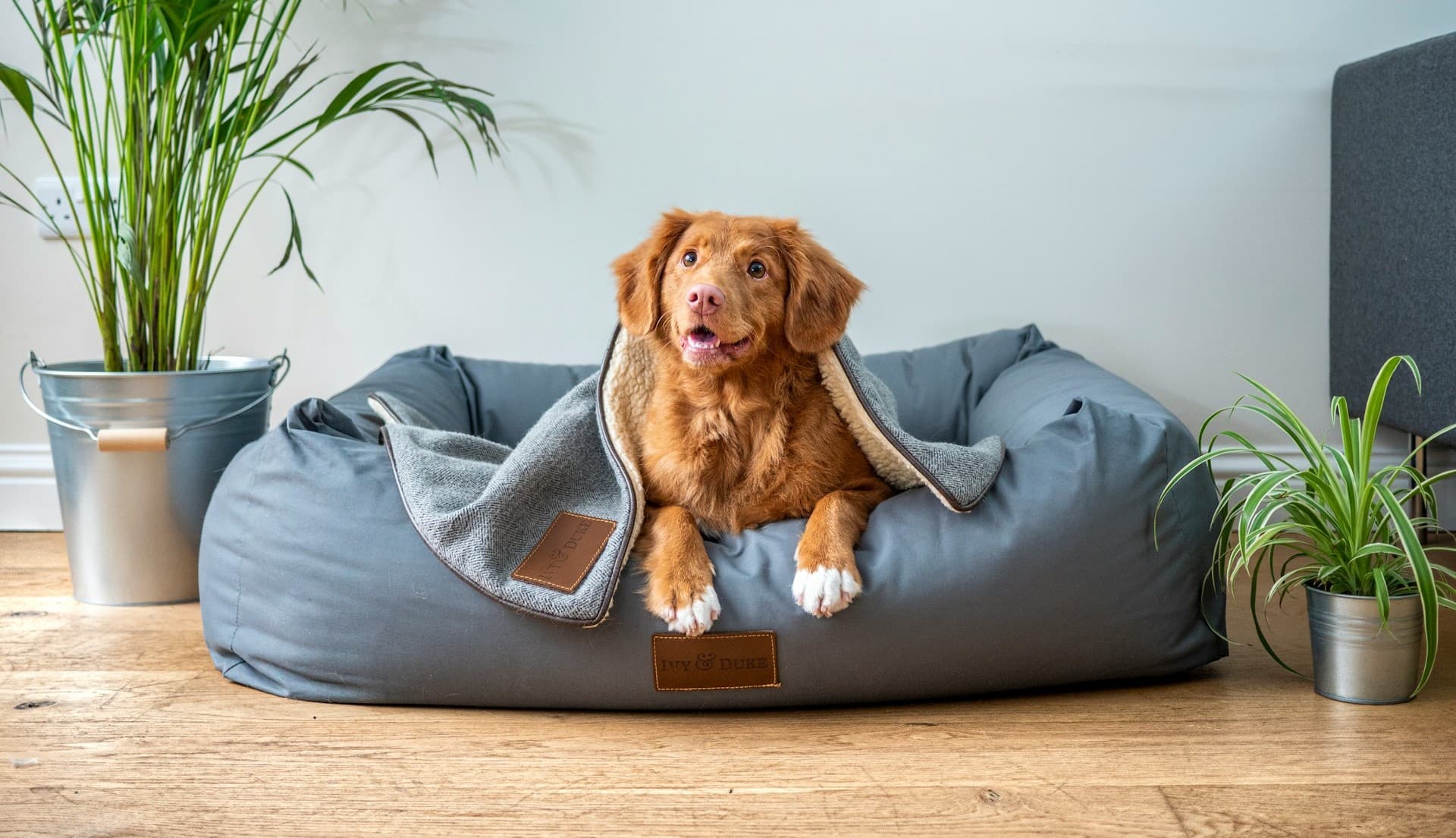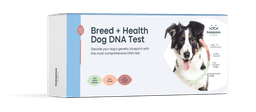Frequent dog grooming at home is necessary to ensure that your dog looks and feels their best. Additionally, you want to use this opportunity to check for any signs of issues with your dog's nails, hair, teeth, ears, or eyes.
Depending on your dog's size, breed, and kind of coat, you should decide how frequently to take them for grooming visits to keep them healthy and happy in general.
Why Is It Important to Groom My Dog?
Brushing your dog will enhance their health in many ways, some of which may not be immediately evident, even if they don't look very dirty. Brushing helps your dog's coat breathe and encourages strong, healthy growth in addition to eliminating dull and damaged hair.
Regular grooming also ensures that your dog's skin has enough air to breathe and helps to minimize the amount of oil in the coat. Maintaining your pet's appearance may help them become used to you and become a relaxing and fun hobby for both of you.
What Grooming Tools Do I Need?
Brushes: Different types of brushes are suitable for various coat types. A slicker brush is great for removing tangles and mats, a bristle brush works well for smooth coats, and an undercoat rake or shedding blade can help with double-coated breeds.
Comb: A sturdy metal comb with both wide and narrow teeth is useful for detangling and checking for any remaining mats.
Nail Clippers: Choose nail clippers designed specifically for dogs. Guillotine-style clippers or scissor-style clippers are common options.
Dog Shampoo: Use a mild, dog-specific shampoo to avoid skin irritation. There are also specialty shampoos for conditions like dry skin or flea treatment.
Ear Cleaner: A gentle ear cleaning solution and cotton balls or pads can help keep your dog's ears clean and prevent infections.
Toothbrush and Toothpaste: Regular brushing with a dog-friendly toothpaste helps maintain your dog's dental health.
Hair Trimmers/Scissors: Trimmers or scissors designed for pet grooming can be handy for trimming around the face, ears, and paws.
Towels: Have several towels on hand for drying your dog after baths or cleaning.
Grooming Table: While not essential, a grooming table can make the process easier by providing a stable surface for grooming and reducing strain on your back.
Styptic Powder: This is useful to have in case you accidentally cut your dog's nails too short and they bleed.
Remember to groom your dog in a calm environment and reward them for good behavior during grooming sessions to make it a positive experience for both of you.
How Often Should I Brush and Bathe My Dog?
The frequency depends on several factors, including breed, exercise level, and skin health. Weekly washes could be beneficial for certain dogs, while less regular bathing might be necessary for others to prevent depriving them of their natural oils. It is important to use shampoos designed specifically for dogs and seek advice from a veterinarian for grooming tips tailored to your pet's needs.
What Should I Do if My Dog is Scared of Grooming or Being Brushed?
It may be challenging to brush your timid dog but try your best. Unbrushed coats may have mats and unclean fur, which can exacerbate skin conditions and increase anxiety.
Use tools like food, exercise, and positive reinforcement during brushing to help lessen fear. Over time, your anxious dog should learn that there's nothing to be afraid of in short sessions that are filled with comfort, positive reinforcement, and confidence.
Grooming Steps
Brushing
For starters, one of the easiest ways to prevent your dog’s coat matting is by brushing it regularly. Although it might not be sufficient, it still can help detect mats and get rid of them before they become too severe.
It’s important to comb their coat properly. You can start by combing their head and then gradually move down. It’s important to comb through areas that are most prone to matting. These areas include the tail, bedding their ears, and under the belly.
If you do happen to notice a tangle, do not worry! Brush that area gently and try not to overbrush as it can irritate. You can avoid this by using the right brush for your dog breed. For example, long hair dogs require special pin brushes, steel combs, or slicker brushes. While on the other hand, for short-haired dogs, you can use just grooming gloves.
Bathing
Another important part of their grooming should be bath time. Usually, dogs only need one bath per month. However, this might be different if your dog happens to shed a lot. In that case, showering once a week might help them manage their dead hair.
Baths can be very stressful for many dogs. However, you can make this into a positive experience regardless. You can start by preparing a bathtub they can feel comfortable in. Then, you can shampoo their fur gently with a mild soap, avoiding the eyes and the ears.
Make sure you wet them with warm water and massage the shampoo gently onto their body. After that, wash thoroughly to remove the shampoo. After successfully bathing them, dry them with a towel or use a blow dryer on a low setting. Avoid using high heat as it can burn their skin.
Nail Trimming
When it comes to grooming, many people forget about their dog’s nails. Long nails often can become curly which brings discomfort and joint pain. By regularly trimming them, you can be sure your dog is happy and healthy.
One way to know whether your dog's nails are too long is by listening to how they walk. Long nails make a clicking sound on the floor when walking. If you hear that sound, it’s time for a trim. Not all clippers are the same. You can use simple human clippers for smaller dogs, but the larger ones need bigger ones as well.
When cutting their nails, make sure not to cut their quick. This is the part of the nail that contains the blood vessels and cutting this can cause them pain. However, this might be difficult to spot on dark nails. You should trim small amounts to avoid cutting into their blood vessels.
Nail trimming can be a stressful experience for your dogs. If you’re not sure whether you can cut their nails, you can always seek professional help to assist you.
Ear Cleaning
It is very important to keep your dog’s ears clean. Healthy ears produce wax and shouldn’t have any unpleasant odor. You can keep up with this by regularly cleaning their ears. There are many specialized solutions you can grab a supply of.
Gently wipe their ears with this solution using a cotton round. Make sure not to rub too much as it can result in sores and irritation. Only clean what you can see. It’s important to have the cleaning solutions be at room temperature before you apply. And, after you clean them, dry the ear with a cotton ball.
Make sure your dog gets reassurance after the cleaning process. Their ears are very sensitive and they might need comfort after this stressful period.
Eye Cleaning
Many dog breeds don’t require any special treatment for cleaning their eyes. Often, you should only clean up some debris in the corners of their eyes. However, dogs with longer hair might be prone to tear stains which might need some attention from you as their owner.
You can address these problems with some specific products you can always find at the pet store by purchasing a dog grooming kit. Those are products that are specifically designed to remove tear stains.
In general, make sure to check their eyes every once in a while. Their whites should stay white and without any discharge and redness. If you notice something unusual, make sure to speak to a professional.
You can go to a professional as well if you need to trim the hair around their eyes. Grooming for dogs can be stressful and it can be risky for you and your pet.
Tooth Brushing
Dental hygiene is also another crucial part of your dog’s health. Like us, dogs have dental products you can use on them to keep their teeth and gums healthy. It is very overwhelming for your dog to have their teeth brushed.
Sometimes, they bite and attack as a way of self-defense since it is a very sensitive place you’re going into. If they happen to show aggression or resistance to brushing their teeth, make sure you stop what you’re doing. Make sure they’re calmed down and give them a break before you continue.
You can start brushing their teeth by placing a small amount of dog toothpaste on your fingers and have it spread across their teeth. Make sure to reward them during each step of this process.
You will notice your dog becoming more comfortable and once you’re sure they’re positive, you can progress by using a finger toothbrush and start brushing their teeth. You want to slowly introduce any dental hygiene product and make it pleasant. By doing this you will make sure your dog is comfortable and trusts you to brush their teeth.
Conclusion
Combining frequent professional grooming visits with at-home hygiene and grooming can keep your dog hair cut, nails, teeth, ears, eyes, and paws clean, healthy, and odor-free. Your entire family will be pleased with this!
Frequently Asked Questions
What are the best tips for grooming your dog at home?
Home dog grooming involves a few key components, such as using the right tools for your dog's coat type, starting with gentle handling and rewarding behavior, and regularly checking on your dog for signs of discomfort or irritation.
How to cut dog hair?
When cutting your dog's hair, use scissors or well-made, specialized clippers designed for pet care. Begin cautiously and gradually, and if you're hesitant, think about getting assistance from a professional groomer.



